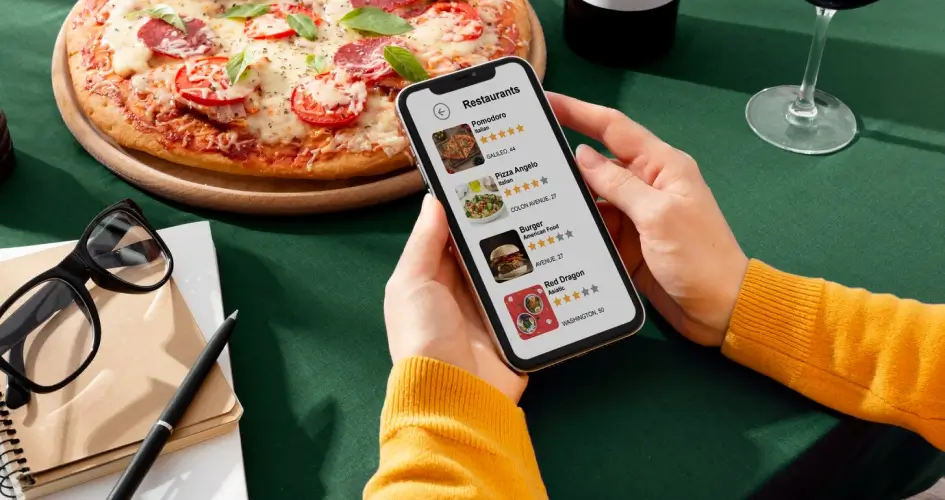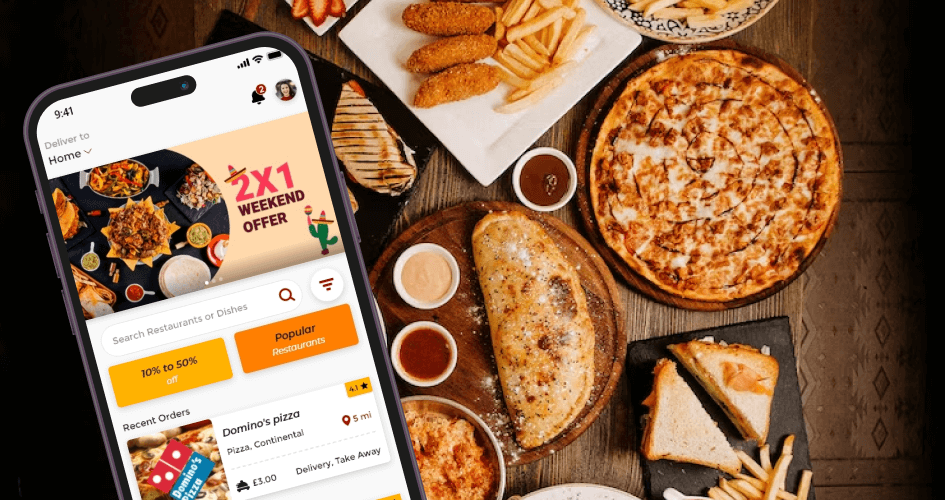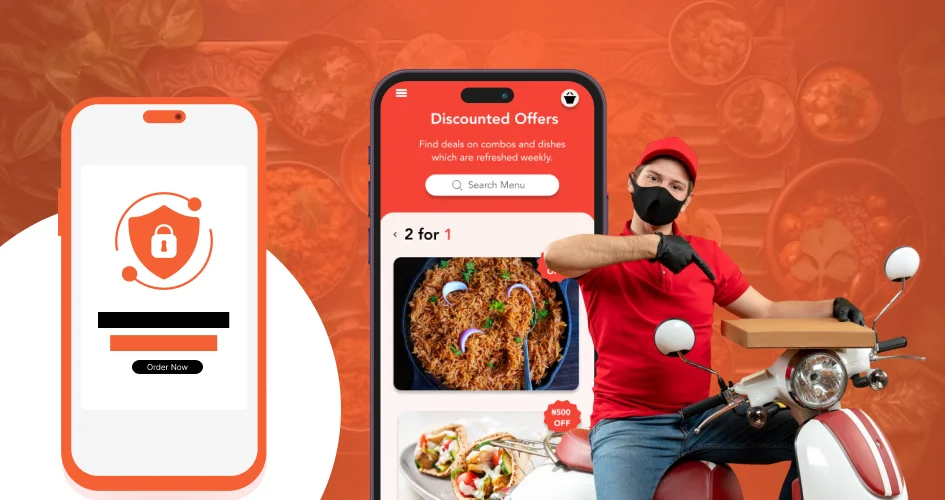Are you a restaurant owner craving a slice of the thriving food delivery market?
What if there was a way to take your restaurant, fast-food chain, or local eatery to the next level by embracing the digital age’s hunger for convenience?
Your eatery’s delicious dishes swiftly delivered to the doorsteps of hungry customers, all thanks to a cutting-edge food delivery app.
But here’s the kicker – success hinges on the tech stack you choose.
In this article, we’ll lead you through the process of choosing the perfect technology stack to create a food delivery app that will keep your customers back for more.
Let’s dig in!
Factors to Consider When Selecting a Tech Stack
Selecting the right tech stack is a crucial step in developing a successful food delivery app.
The choice of technology will impact your app’s performance, scalability, and overall cost.
Here are the critical considerations when choosing a tech stack for food delivery apps:
Looking for Expert Food Delivery App Development Services?
Get a FREE 30-Minute Consultation Now! Let’s Choose the Perfect Tech Stack Together!
Type of Food Delivery App
The tech stack you choose should align with the specific type of food delivery app you’re developing.
Restaurant-Based Apps
These apps primarily connect customers with individual restaurants.
They may require integrations with restaurant management systems and POS systems.
Common choices include MEAN (MongoDB, Express.js, Angular, Node.js) and LAMP (Linux, Apache, MySQL, PHP) stacks.
Aggregator and Marketplace Apps
Aggregator apps that list multiple restaurants require robust backend systems.
Technologies like Ruby on Rails, Django, or Node.js for the backend and React or Vue.js for the frontend can be effective.
Niche-Specific Apps
If your app focuses on a specific niche, like vegan or gourmet food, the tech stack can be tailored to the unique needs of that niche. Customization is key in these cases.
Scalability
Food delivery apps need to handle an expanding user base and increasing order volume.
According to a survey, 74% of users are more likely to abandon an app if it’s slow to load, highlighting the importance of a scalable tech stack.
AWS, Azure, or Google Cloud are some examples of cloud services that can offer the infrastructure you need to extend your project as it expands.
Budget Constraints
Your budget will influence your tech stack choices.
Open-source technologies are often cost-effective, and you can find a balance between functionality and cost.
Choosing the right database technology, like PostgreSQL or MySQL, can also help manage expenses.
On average, mobile app development costs range from $30,000 to $700,000, depending on complexity, which underscores the need to align your tech stack with your budget.
Development Time
The time required to develop your app is a critical factor, especially in the fast-paced food delivery industry.
Frameworks like React Native or Flutter can help expedite the development process by allowing you to build for both iOS and Android platforms simultaneously.
Developer Expertise
The skills available within your development team should guide your tech stack selection.
If your team is well-versed in a particular technology, leveraging their expertise can lead to faster development and better app performance.
Front-End Development
When it comes to building the front-end of your food delivery app, the user experience and interface are paramount. Here, we delve into the key components of front-end development that shape your app’s look and feel:
UI/UX Frameworks
Crafting an engaging and user-friendly interface is essential for keeping your customers hooked.
Consider the following UI/UX frameworks:
- React
- Vue.js
- Material-UI
Cross-Platform vs. Native Development
The choice between cross-platform and native development can significantly impact your front-end development.
Below is the format provides a concise comparison of the pros and cons for both Cross-Platform and Native Development approaches.
It can help you make a more informed decision based on your project’s specific needs and priorities.
| Aspect | Cross-Platform Development | Native Development |
| Development Time | ✔ Generally faster due to code reuse | ❌ Requires separate development for each platform |
| User Experience | ✔ Provides a consistent experience across platforms | ✔ Offers the highest level of platform-specific features and performance |
| Code Reusability | ✔ A single codebase for multiple platforms | ❌ Separate codebase for each platform |
| Learning Curve | ✔ Easier learning curve and lower entry barriers | ❌ Steeper learning curve, requires expertise in platform-specific languages |
| Performance | ✔ Good performance, suitable for most apps | ✔ Excellent performance with access to low-level platform features |
| Access to Native Features | ❌ Limited access to some platform-specific features | ✔ Full access to all platform-specific features |
| Maintenance and Updates | ✔ Easier maintenance with updates applied universally | ❌ Requires separate updates for each platform |
Back-End Development
In the realm of food delivery app development, the back-end is the engine room where all the magic happens. Here’s a quick look at the essential components that power this engine:
Server and Hosting
When it comes to the server and hosting, you have a variety of options at your disposal.
Each choice comes with its unique benefits, ensuring your app’s performance is as delicious as the dishes it delivers:
- Cloud Hosting
- Shared Hosting
- Dedicated Servers
Database Systems
Efficient data management is a recipe for a successful food delivery app. Here are the key ingredients when it comes to database systems:
- Relational Databases: Options like MySQL, PostgreSQL, or Microsoft SQL Server excel at handling structured data and ensuring data integrity.
- NoSQL Databases: NoSQL databases like MongoDB and Cassandra are ideal for scenarios where data schemas evolve over time and require flexibility with unstructured data.
- In-Memory Databases: In-memory databases like Redis and Memcached store data in RAM, offering lightning-fast data retrieval and reducing latency in serving hungry users.
APIs and Integration
To make your food delivery app truly mouthwatering, you’ll want to connect with external services and databases seamlessly.
This involves wielding the power of APIs:
Third-Party Integrations: Integrate with payment gateways, mapping services, and even social media platforms to enhance your app’s functionality.
Custom APIs: Craft custom APIs to share data with partners, allowing for smooth collaborations and expanding your app’s capabilities.
Security and Privacy
In the realm of food delivery apps, security is paramount.
Your choice of tech stack plays a critical role in safeguarding user data and maintaining customer trust.
Here’s what you need to consider:
- Encryption: Ensure that your tech stack supports robust encryption methods to protect sensitive customer information during transactions and data storage.
- Authentication: Implement strong user authentication measures, such as multi-factor authentication (MFA), to prevent unauthorized access to accounts.
- Compliance: Stay up-to-date with data protection regulations like GDPR and HIPAA, ensuring that your tech stack aligns with these requirements to avoid legal complications and data breaches.
Mobile App Development
When it comes to mobile app development for your food delivery service, the right tech stack can make all the difference. Consider these factors:
iOS vs. Android: Decide between developing natively for iOS and Android or choosing cross-platform development for broader reach.
Mobile Development Frameworks: Explore options like React Native, Flutter, and others, which offer efficient ways to build and maintain your mobile app on multiple platforms, saving you time and effort.
Real-Time Features
Real-time features are indispensable in the world of food delivery apps, enhancing the user experience and boosting operational efficiency. Here’s how your tech stack comes into play:
The Need for Real-Time: Real-time features, such as order tracking and delivery updates, keep customers informed and engaged while improving the efficiency of your delivery operations.
Leveraging Real-Time Technologies: Your tech stack should support technologies like WebSockets for instant data transmission and push notifications to deliver timely updates to users.
These tools ensure that your food delivery app stays at the forefront of convenience and reliability.
Conclusion
In wrapping up, we’ve covered the key aspects of selecting the right tech stack for food delivery apps, from development to security and real-time features.
Now, we’d like to hear from you. What tech stack are you using or considering?
Share your insights and questions in the comments below to help others in this dynamic field.
Your choice of tech stack is pivotal to delivering an exceptional customer experience, so choose thoughtfully and keep innovating.





